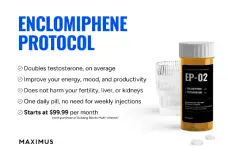TorontoTRT
Active Member
Got my DHT finally tested and it doesn't seem to correlate with the other hormone values. I mean it's normal range high, but the other results are way higher. What could be causing this? I hear dht should be 10% of total testosterone.
Trough numbers:
TT - 926
FT - 23.2
E2 - 72.5
DHEA - 247
DHT - 64 range 16 - 79 ng/dl
Trough numbers:
TT - 926
FT - 23.2
E2 - 72.5
DHEA - 247
DHT - 64 range 16 - 79 ng/dl














